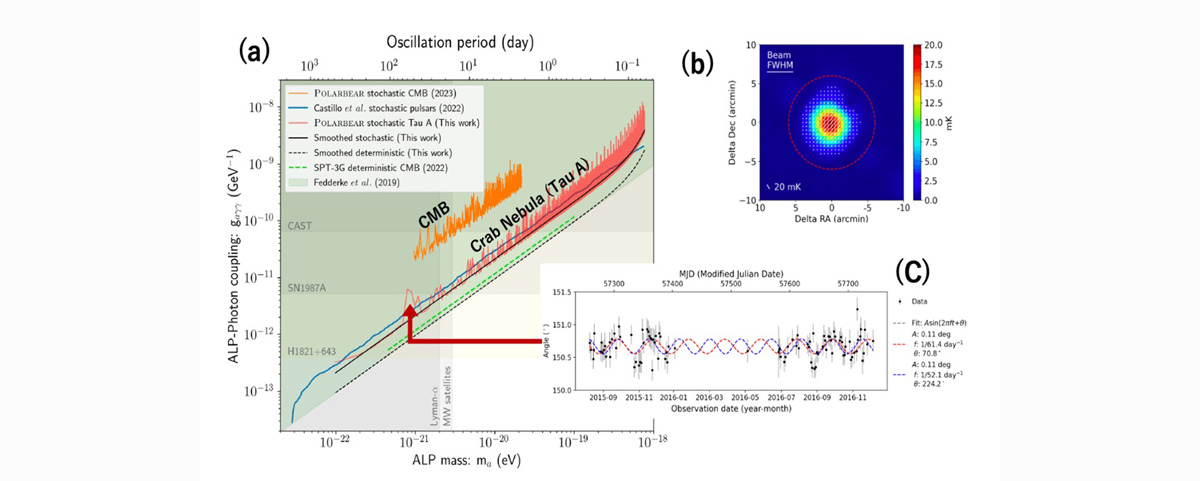

News
Topics
2024.9.10
Search for Ultralight Dark Matter
Dark matter is a mysterious substance of the Universe that we can't see, touch, or detect directly. The axion-like particles (ALPs) predicted by string theories can be bosonic ultralight dark matter. Ultralight dark matter with masses around 10−22eV is especially interesting because it could resolve small-scale tensions that exist in the standard cold dark matter model.
WPI-QUP scientists are working for the analysis of the POLARBEAR experiment. The experiment explored this possibility by observing the polarization of the microwave emitted from an astronomical source. The result was recently published in Physical Review D on 9th September 2024.
Since ALPs introduce birefringence, which presents a unique detection pathway for their presence, the observer on Earth sees an oscillation in the polarization angle of linearly polarized astronomical sources.
By measuring the polarization of the microwave from the Crab Nebula with the POLARBEAR experiment located in the high Atacama Desert in Northern Chile at an altitude of 5200 meters, the group placed an upper limit on the coupling between the ALP and microwave (photon) for ALP masses of 9.9x10-23eV to 7.7x10-19eV. The upper limit is the tightest bound from the measurement of the ALP-induced polarization angle oscillation. The group also found the largest deviation from null-oscillation at ALP masses of 7.8x10-22eV and 9.2x10-22eV, which may be a hint of the dark matter.
Dr. Yuji Chinone, who is a member of the POLARBEAR experiment and the QUP senior scientist, commented on the following with high expectations: “The deviation we observed in the polarization from the Crab Nebula is still faint and can be a statistical fluctuation. But we expect that future measurements by a successor experiment called the Simons Array with more data will lead us to a more conclusive interpretation.”
The POLARBEAR experiment is an international collaboration on the CMB experiment involving about 100 researchers from about 20 institutes. The POLARBEAR receiver consists of superconducting transition-edge sensors invented by Dr. Prof. Adrian Lee, who is one of the QUP PIs, and he leads the experiment. The details of the experiment can be found HERE: https://cmb.kek.jp/polarbear/overview.html.

(a) Upper bounds on the ALP-photon coupling at 95% C.L.
(b) Polarization map of Crab Nebula observed by POLARBEAR.
(c) Measured oscillation of the polarization angle of the Crab Nebula by POLARBEAR.
